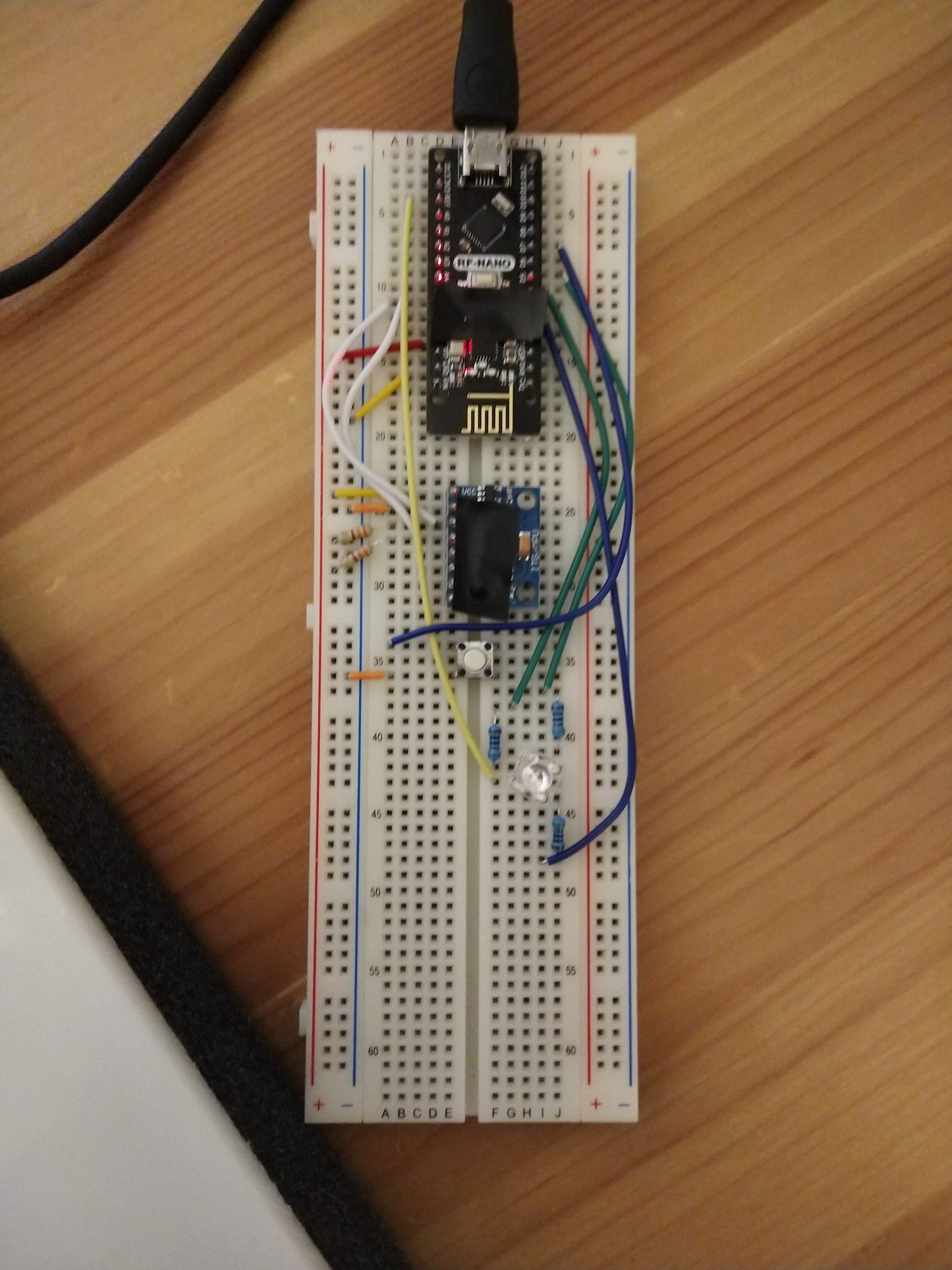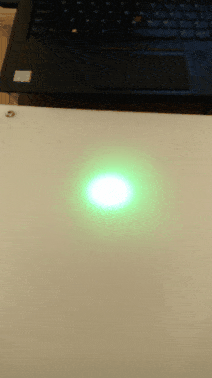Although I'd previously said I plan to use ESP32, I had some Nano RF boards that I had on hand, and though I'd test them out. These are very similar to what I'd used on the last prototype a few years ago. They have an atmega328p microcontroller and are in the classic Arduino Nano form factor, but have an NRF24L01 radio onboard. For ~$4 from Aliexpress, they are an interesting part (although unfortunately they run at 5V).
I thought these were worth testing out, since ESP32s are extremely power hungry. The Nano RF could feasibly be almost 100X more power efficient, allowing me to use much smaller batteries and still have great battery life.
I breadboarded two of the Nano RF boards, each with a GY-521 (MPU-6050) accelerometer/gyro sensor, a Piranha RGB LED, and a button.

One of the devices is the "main" board, which makes game decisions, and handles the overall system state. All the rest respond accordingly. In the image below, the secondary device has turned on the LED as requested by the main board shown on the right.

I also have sense, timing of response, and feedback of that information back to the main board working. It is super janky and delicate in the code, but it works. The gif below shows the board lit up, beginning to fade down as it times out, then I hit the board. The impact is sensed and the main board recognizes the impact and the time it took. Right now, impact sensitivity is set low as a desktop proof of concept.

This prototyping shows that this system design will work. The libraries needed don't take up much of the memory of the Nano RF's, so more games and less janky code can still be added. I need to do some power measurements while these are running, but using these for the next prototype would have a few nice advantages. By reducing power consumption so much, a much smaller battery could be used. This may be advantageous since I have no idea how batteries will handle the impact of a real shot. Damaging a small battery seems much less risky. In addition, different battery chemistry could be used. With the Nano RF devices, alkaline cells may be an OK choice without having to change them all the time.
Discussions
Become a Hackaday.io Member
Create an account to leave a comment. Already have an account? Log In.